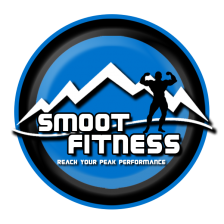Warming Up For Optimal Performance

When I first started lifting weights, I was the stereotypical “beginner” that did everything completely wrong. I didn’t pay attention to proper nutrition, never gave my muscles time to recover, and let my pride dictate my weights, leading to improper technique development and a lot of overuse injuries.
I program hopped, overdid it on cardio, neglected legs for the first year of my lifting career, and the mistake that has arguably given me the most problems of all….I never warmed up. This is about as bad of a decision as when I stuffed my grandmother’s glasses down her air condition vent (I was a little kid… and had full intentions of fishing them back out).
If you want to maximize performance and stay injury free, you need to start warming up!
Static Stretching vs. Dynamic Stretching vs. Foam Rolling
Ok so there is a lot of controversy right now over what should be included in a properly designed warm up. The research points toward dynamic stretching (active stretching) and foam rolling being more effective at enhancing athletic performance than static stretching. Static stretching, think back to your old high school track days, has not been shown to decrease the risk of injury as previously thought and can actually decrease athletic performance (relaxing your muscles is not something you want to do before you try to maximally contract them during exercise).
As far as my stance on this goes, it really needs to be looked at on an individual basis. Using me as an example, there was a point in time where my flexibility and mobility were so bad that I couldn’t bend over to tie my shoes without it feeling someone took a flamethrower to my hamstrings. My quads, adductors, and calves weren’t any better. Decreased performance or not, there was no way in hell I was going to squat through a full range of motion without incorporating some amount of static stretching and foam rolling in to my warm up.
Now as my muscles started to loosen up, I was able to decrease the stretching and SMR in my warm up until it consisted solely of dynamic stretches that mimicked the movement patterns that I was about to work. This is the most optimal warm up in my opinion. It primes the nervous system and increases blood flow to the muscles in the shortest amount of time possible.
Now don’t get me wrong, foam rolling and stretching are a vital part of your overall mobility program and my recover roller from tigerfitness.com has certainly been a priceless investment. Foam roll the night before your workout and save the static stretching for your post-workout cool down. When it is time to train, it is time to train.
How Long Should The Warm Up Be?
Before we get to the length of your warm up, I want to touch on your mobility program as a whole. When you do any type of mobility work (joint distraction, soft tissue work, static stretches at end range of a movement pattern), you are stimulating chronic (long term) positive adaptions. This means that if you are doing mobility work at times away from your training session (which I think you should), those new adaptions will carry over in to the next time you train.
To give you an example, I foam roll my lower body the night before squat/deadlift day. The new level of mobility is present when I get to the gym the following day, so I only need to do a few dynamic stretches and I am in the squat rack ready to roll! I program my lower body stretches directly following my workout, and those adaptions carry over in to my next training session, next stretching session, etc.
In my opinion, the warm up should only take about 10 minutes max. Now this guideline will change depending on your current tissue health, but the goal is to get to the point where you hit five minutes of light cardio (optional), go through 4-8 exercises targeting the joints and movement patterns you are about to train, and then go right in to the first set of the main lift of the day.
Lower and Upper Body Warm Up Examples
Below are my current lower and upper body warm ups. I experimented with various warm up templates and exercises until I found what worked best for me. In order for you to develop an optimal warm up routine, I recommend you to do the same.
Now a tip I learned from Eric Cressey and Greg Robbins is to start with mobility exercises done on the ground before moving to ones done standing or in motion. This works well for me and the clients that I train. At the end of the day, the order of exercises in your warm up is not going to make that big of a difference. However, I do think it is optimal to save the exercise that most closely resembles your main lift of the day for last.
Lower Body Warm Up (Squat/Deadlift Day)
– Glute Bridges- 1×8
– Scorpions- 1×10
-Thoracic Bridge- 1×5 (per side)
-TKE (Terminal Knee Extensions) 1×10 (per leg)
-Banded Stationary Lunge- 1×10 (per leg)
-Bodyweight Squats- 1x 10
– Go in to first warm up set of the main exercise of the day
Upper Body Warm Up (Bench/OHP/Pull Day)
-Scorpions 1×10
-Thoracic Bridge- 1×5
-Band Pull A Parts- 1×10
-Band Pull A Parts (pull-up movement pattern)- 1×10
-Banded Rows- 1×10
-Shoulder Swings- 1×15
-Pushups- 1×10
-Go in to first warm up set of the main exercise of the day
Summing Up
Alright so I have come to the conclusion that the warm up is an integral part of the training program and I made a serious mistake not warming up from the start. Keep it simple, keep it short, and experiment with different exercises and templates until you find what works for you. If you are serious about maximizing performance and preventing injuries, warm up!!

Like What You See?
Get the Smoot Fitness Guide to Getting Stronger - FREE.


Leave a Reply